Everything you ever wanted to know about the mind diet
It's simple to follow and may help protect your body from disease.
Updated on July 18, 2025

Year in and year out, the MIND Diet ranks among U.S. News and World Report’s best diets. What makes it so effective?
The MIND Diet encourages you to eat specific, delicious options that support your heart and brain health. It’s not a diet of deprivation. You’ll be motivated to make healthy swaps because MIND Diet foods are satisfying and may help to lower your risk of chronic illnesses like Alzheimer’s and heart disease.

What’s the MIND Diet?
The MIND Diet, or Mediterranean-DASH Intervention for Neurodegenerative Delay, combines key disease-fighting principles from two other science-based diets. It blends the DASH Diet, which helps to control blood pressure, and the Mediterranean Diet, which has been linked to longevity, among other health benefits.
The MIND Diet stresses several food groups linked to brain health, including nuts, berries, and fatty fish. Research suggests that people who follow the eating plan may have a lower risk of cognitive decline and dementia, including Alzheimer’s disease. The MIND Diet may also help to reduce the risk of developing other conditions like heart disease and high blood pressure.

Can you lose weight?
The MIND Diet doesn’t involve rigid rules or careful calorie counting. Instead, it prompts you to eat a minimum number of healthy foods each week, such as fruits and nuts. It also urges you to eat fewer foods that are known to contribute to chronic disease, such as baked goods and red meat. While the plan was designed with Alzheimer’s prevention in mind, a pleasant side effect is often weight loss.

Foods to love
Keep track of your servings, and eat at least the minimum amount of these essential foods:
- Green leafy vegetables: 6-plus servings weekly
- Other veggies like cauliflower and sweet potatoes: 1-plus servings daily
- Fruit: No restrictions, but include at least 2-plus servings of blueberries weekly
- Whole grains: 3-plus servings daily
- Legumes: 3-plus servings weekly
- Nuts: 5-plus servings weekly
- Fish: At least once a week, but preferably more
- Poultry: 2-plus servings weekly
- Olive oil: Use frequently for cooking
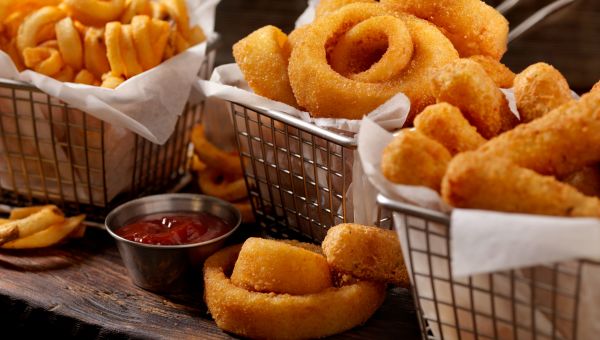
Foods to limit
The less you can eat of these foods, the better. Aim for no more than these amounts:
- Red meat: 4 servings weekly
- Butter and margarine: 1 tablespoon daily
- Cheese: 1 serving weekly
- Fried or fast foods: 1 serving weekly
- Desserts and added sugar: 5 servings weekly
Limit salt as well. The MIND guidelines don’t give a specific target for salt intake, but the DASH Diet recommends staying below 1,400 mg daily.

How to track your weekly servings
Tracking your meals can help you eat a healthier diet and manage your weight. A journal or smartphone app can be especially helpful on the MIND Diet because it reminds you how many servings of each food you’ve had that week.
But you might not always have time to write down what you eat. If you tend to munch on the go, consider keeping a photo journal instead. Just snap a pic of each meal with your smart phone. Later, you can swipe back to remember what you’ve had.
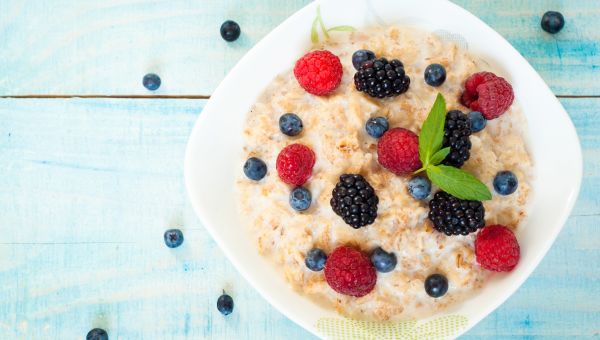
Have whole grains for breakfast
Oatmeal is the ideal MIND Diet breakfast. It’s simple and delicious when made properly. It also has a long list of health benefits, including:
- Helping to control blood sugar for people with diabetes
- Lowering your levels of total cholesterol and LDL (aka “bad” cholesterol)
- Keeping your digestion regular
- Filling you up so you can power through your morning
You can up your whole grain intake by choosing an oatmeal mix that contains other grains. You can also stir in leftover whole grains from the previous night’s dinner, like brown rice, for extra fiber and texture.
Avoid instant oatmeal with added sugar and artificial flavors. Opt for plain rolled or steel-cut oats instead. Then, choose from these healthy toppings: berries, nuts, seeds like chia or flax, cinnamon, ground ginger, almond milk, almond or vanilla extract.
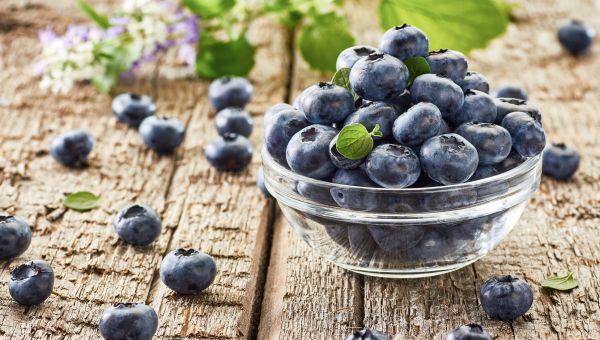
Sprinkle in some blueberries
Specifically included in the MIND Diet, blueberries contain flavonoids, antioxidant plant compounds that give them their color. Research suggests flavonoids may improve memory by encouraging communication between brain cells.
Add blueberries to oatmeal or smoothies, or snack on them with a handful of nuts. Aim for two servings or more per week.

Make lunch leafy
Lunch is the perfect time to sneak leafy greens into your routine because prewashed greens are a simple base for quick-prep salads.
Keep two to three containers of green leafy vegetables in your fridge, such as arugula, kale, and watercress. In the morning, toss a handful of each green into your lunch container. Blending greens helps you get in more servings, while adding flavor and texture to your lunchbox.
Mix in a variety of other pre-cut and pre-washed veggies like shredded carrots, cabbage, and broccoli for toppings. Add grains like quinoa or bulgur from the night before to bulk up your salad, and don’t forget a protein like:
- Nuts
- A hard-boiled egg (boil and peel some eggs during Sunday meal prep sessions)
- A frozen veggie patty (will defrost by lunch; then heat in a microwave or toaster)
- Hummus
- Leftover poultry from the night before
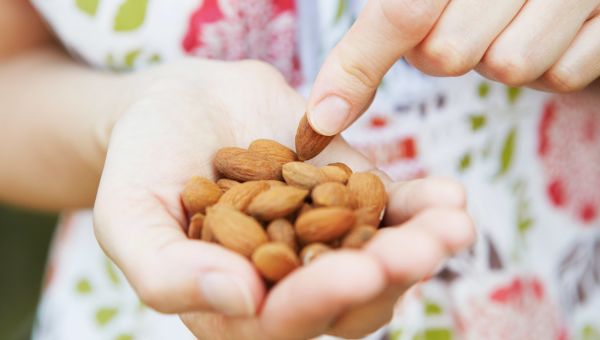
Snack on fruit and nuts
Keep MIND Diet snacks visible and on-hand so processed foods from the pantry or freezer don’t lead you astray:
- Put out bowls of nuts and dried fruit—on your desk, kitchen counter, or anywhere else you get the munchies. Nuts can be high in calories, though, so be mindful of your servings.
- Keep a bowl of washed, fresh fruit on the counter for snacking, too.
- Ask your family to keep chips and packaged goods in the pantry (or to reduce purchases of them altogether). Keep cakes and breads in the freezer so they’re out of sight—and you have to defrost them before eating.
- Enjoy cheese once a week or less.
- Dark chocolate is great for snacking, too, but check the sugar content. Limit added sugar and desserts to fewer than five servings weekly.
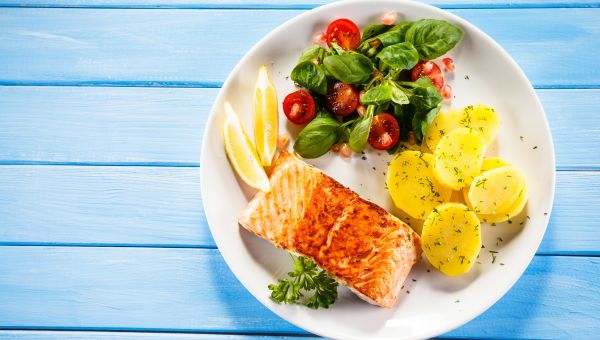
Make fish for dinner
Fish is a key brain-boosting food. Fatty fish is especially rich in omega-3 fatty acids, which may help protect against beta-amyloid plaques, brain proteins that contribute to the development of Alzheimer’s.
Buy fish when you see it on sale. But don’t hesitate to ask the person working at the counter when it was caught and how long it’s been sitting out. The sale price isn’t worth it if the fish is no longer fresh.
Freeze your fish if you’re not planning to cook it that night. Buying fish whenever you see sales then freezing it for later is a smart way to cut costs on this diet. It’ll ensure you always have affordable lean protein on hand.
Pro tip: Salmon, tilapia, cod, and catfish tend to contain fewer heavy metals like mercury. Also, tilapia and catfish are often less pricey.
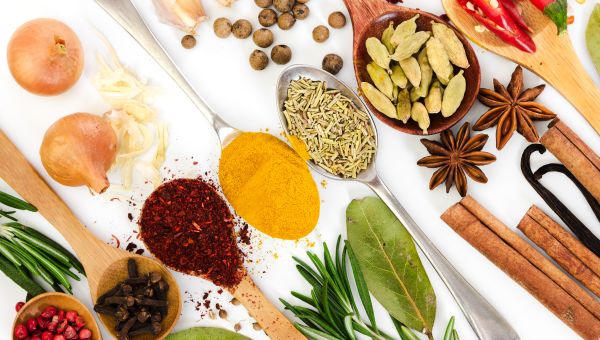
Skip the salt without sacrificing flavor
Spice mixes can be delicious alternatives to salt. But you still need to read the ingredients and nutrition facts since blends sometimes contain salt.
Salt substitutes are usually safe, but check those labels, too. Some substitutes contain potassium chloride, which can interfere with medications or aggravate symptoms for people with certain medical conditions like heart disease.
If your food’s still missing something, don’t reach for the salt shaker. Try one of these Mediterranean-inspired toppings instead:
- Red wine or apple cider vinegar
- Olive tapenade (check the sodium content first)
- Roasted red peppers
- Peppers pickled in vinegar, not salt
- Sliced red onions
- Fresh squeezed lemon

The question of wine
The MIND Diet allows for a moderate intake of one serving, 4 to 5 ounces, of wine daily. But if you’re not a drinker, don’t start. If you do drink, do so in moderation. That’s a limit of one drink each day for women and two for men. Once you move beyond moderate intake, experts agree that alcohol can significantly harm your health. Among other serious illnesses, excess drinking can raise the risk of liver problems, heart disease, stroke, and some cancers.

Sample breakfast: Gingerbread Pancakes
Oatmeal is a great morning go-to, but you can enjoy other breakfasts, too—even these gingerbread pancakes. They don’t need syrup, but if you use it, measure out one serving and count it toward your weekly sugar allowance. Even without syrup, you’ll be pleasantly surprised by comforting flavors like cinnamon, vanilla, and cloves.

Try this scrumptious side instead of processed meats
Skip the salty breakfast meats and serve homemade turkey sausage instead. Mix 2 lbs lean ground turkey, 1 egg white, 1 tablespoon pure maple syrup, 1 tablespoon ground sage, and 1/2 teaspoon ground rosemary. Add red pepper flakes, fennel seeds, black pepper, and garlic powder to taste. Form into patties and lightly pan fry with olive oil.
Calories per serving: 138; 1.9 g fat; 27.3 g protein; 64 mg sodium; 0.3 g fiber; 2.2 g carbs; 1.6 g sugar
Inspired by The Everything Guide to the MIND Diet: Optimize Brain Health and Prevent Disease With Nutrient-Dense Foods

Sample lunch: You Won’t Believe It’s Kale Salad
This kale salad recipe is salad at its best. The dressing combines savory soy sauce (low sodium), sweet agave nectar, and refreshing lemon, which isn’t just delicious, but also tenderizes the kale leaves. A blended topping of toasted pecans and dried cranberries adds crunchy, chewy texture.

Sample dinner: One-Pan Maple Mustard Chicken and Potatoes
This simple and filling one-pan chicken and potato dish is exactly what you need at the end of a long day. The mustard glaze tastes rich and savory; just make sure you choose low-sodium and low-sugar mustard. For a simple side, toss in some veggies—any you have on hand—or whip them up separately on your second oven rack. Put parchment paper on a baking sheet, cover with vegetables, and flavor to taste with olive oil, black pepper, garlic, lemon juice, or low-sodium hot sauce.

Some challenges and limitations
The MIND Diet doesn’t account for every detail of what you should and shouldn’t eat. And since it’s a relatively new diet—the original research was published in 2015—it can be a challenge to find resources when questions come up. A wise idea is investing in one or more MIND Diet cookbooks so you have a go-to source for recipes and answers.
Another challenge can be the price of key ingredients like fish, nuts, and olive oil. The good news is that dry ingredients like nuts and dried fruit can be bought in bulk and last for a long time. When it comes to fresh ingredients like fish and produce, buying local and in-season can cut costs.

van Soest AP, Beers S, et al. The Mediterranean-Dietary Approaches to Stop Hypertension Intervention for Neurodegenerative Delay (MIND) Diet for the Aging Brain: A Systematic Review. Adv Nutr. 2024 Mar;15(3):100184.
Shanley Chien and Erica Urban. The MIND Diet: Meal Plans, Reviews and Tips for 2024. U.S. News and World Report. March 19, 2025.
Christy Ellingsworth and Murdoc Khaleghi, MD. The Everything Guide to the MIND Diet: Optimize Brain Health and Prevent Disease with Nutrient-dense Foods. Everything Publisher, 2016.
Marcason W. What Are the Components to the MIND Diet? J Acad Nutr Diet. 2015 Oct;115(10):1744.
Harvard TH Chan School of Public Health. Diet Review: MIND Diet. August 2023.
Morris MC, Tangney CC, et al. MIND diet slows cognitive decline with aging. Alzheimers Dement. 2015 Sep;11(9):1015-22.
Agarwal P, Leurgans SE, et al. Association of Mediterranean-DASH Intervention for Neurodegenerative Delay and Mediterranean Diets With Alzheimer Disease Pathology. Neurology. 2023 May 30;100(22):e2259-e2268.
Barnes LL, Dhana K, et al. Trial of the MIND Diet for Prevention of Cognitive Decline in Older Persons. N Engl J Med. 2023 Aug 17;389(7):602-611.
Academy of Nutrition and Dietetics. What is the MIND Diet? December 20, 2023.
Barrow Neurological Institute. The MIND Diet. Accessed July 18, 2025.
Hollis JF, Gullion CM, et al. Weight Loss Maintenance Trial Research Group. Weight loss during the intensive intervention phase of the weight-loss maintenance trial. Am J Prev Med. 2008 Aug;35(2):118-26.
Xu R, Bannor R, et al. How much food tracking during a digital weight-management program is enough to produce clinically significant weight loss? Obesity (Silver Spring). 2023 Jul;31(7):1779-1786.
Nunns M, Febrey S, et al. Evaluation of the Aspects of Digital Interventions That Successfully Support Weight Loss: Systematic Review With Component Network Meta-Analysis. J Med Internet Res. 2025 May 22;27:e65443.
Michael Merschel, Take a fresh look at oatmeal – it's not as simple as you think. American Heart Association News. September 1, 2022.
Mayo Clinic. Cholesterol: Top foods to improve your numbers. May 2, 2024.
Lin Yan. Blueberries and Health. USDA. September 11, 2023.
Blueberry.org. Health Benefits. Accessed July 18, 2025.
American Heart Association. Build a Healthier Salad Infographic. Accessed July 18, 2025.
NIH Office of Dietary Supplements. Omega-3 Fatty Acids: Fact Sheet for Consumers. July 18, 2022.
California Office of Environmental Health Hazard Assessment. Mercury in fish. Accessed July 18, 2025.
Greer RC, Marklund M, et al. Potassium-Enriched Salt Substitutes as a Means to Lower Blood Pressure: Benefits and Risks. Hypertension. 2020 Feb;75(2):266-274.
National Institute on Alcohol Abuse and Alcoholism. Alcohol’s Effects on the Body. June 2025.
More On


video

article


video


video


video
